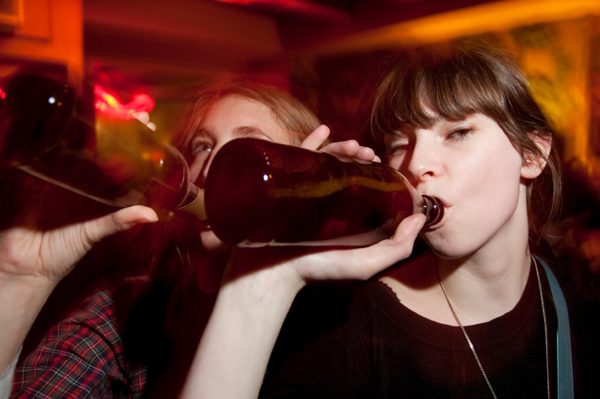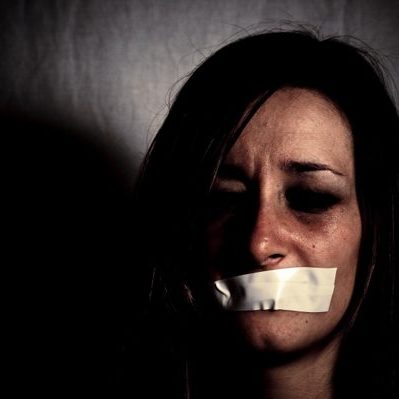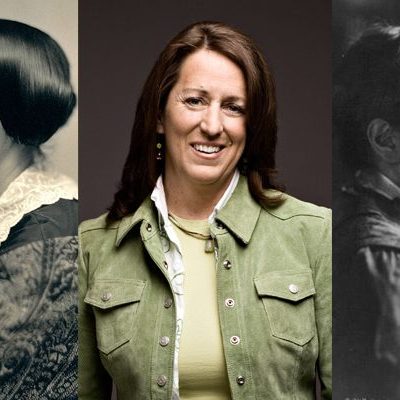 Why are Lesbians at risk of alcoholism and drug abuse?
Why are Lesbians at risk of alcoholism and drug abuse?
Lindsay Lohan looked surly and sexy on May 24 as she appeared in court for a mandatory hearing. Her hair was dyed black, she wore a low-cut white blouse and a black suit. No doubt Lohan thought she looked demure. No doubt she also didn’t think being late for the hearing after having missed her last court date was a problem. But to anyone who has dealt with a family member, lover or friend with addiction, Lohan looked like what she is: an addicted woman out of control of her life.
Lohan, 23, has become a poster child for lesbians with addictions. Her very public break-up with dyke DJ Samantha Ronson was, according to numerous tabloid reports, a direct result of Lohan’s equally public drunkenness and drug abuse. When the couple split last year, Lohan was literally falling down drunk in public.
At the May 24 hearing, Lohan was ordered to abstain from alcohol and drugs and to wear an alcohol monitoring device. She tried arguing with the judge, but her attorney silenced her. Yet by June 8, the device had allegedly gone off at a party after the MTV Movie Awards show and Lohan’s freedom was in jeopardy.
One more such incident and Lohan will be imprisoned for violating the terms of her probation for DUI and being caught with cocaine on her person.
Lohan may be a very public face of lesbian substance abuse, but she is only one of the thousands of American lesbians suffering from addictions to alcohol and drugs.
The statistics on what makes an alcoholic woman are as sobering as they are alarming. According to the Centers for Disease Control (CDC) and the National Institute on Alcohol Abuse and Alcoholism (NIAAA), one-third of American women drink alcohol. Of those, one in ten drinks over the limit is categorized as “infrequent” (one to 11 drinks per year) or “moderate” (one drink per day).
The NIAAA defines heavy drinking as drinking more than two drinks per day and/or getting legally drunk (approximately three drinks over a five-hour period will make an average-sized woman drunk) more than once a year.
A single drink is described by the NIAAA as a 12-ounce bottle of beer or wine cooler, a five-ounce glass of wine or 1.5 ounces of distilled spirits.
Alcohol is far more damaging to women’s bodies than to men’s due to how alcohol is metabolized and also because women’s livers are far smaller. Women are likely to develop alcohol-related diseases, including cirrhosis, breast and liver cancer, brain atrophy and osteoporosis, more quickly than men.
Women are also more likely to become severely depressed from frequent drinking than men. According to the CDC, the rate of alcohol-induced suicide is much higher for women than men.
Why the difference between women and men? Alcohol passes through the digestive tract, is metabolized by the liver and is dispersed in the water in the body. The more water, the more diluted the alcohol. Most men weigh more than most women and pound for pound, women have less water in their bodies than men. Thus a woman’s brain and other organs are exposed to more alcohol before it is broken down. These differences account for the short- and long-term effects of alcohol on women.
The NIAAA notes that “women who have trouble with their closest relationships tend to drink more than other women.” Heavy drinking is more common among women who have never married, are living unmarried with a partner or are divorced or separated. A woman whose partner drinks heavily is more likely to drink heavily herself.
The NIAAA also asserts that “many studies have found that women who suffered childhood sexual abuse are more likely to have drinking problems. Depression is closely linked to heavy drinking in women, and women who drink at home alone are more likely than others to have later drinking problems.”
According to the CDC, white women tend to drink most heavily in their teens, 20s and 30s, while African-American women are more prone to drinking heavily in middle age. Native American women have problems with alcohol at a rate far higher than women of other ethnic origins.
Like Lohan, Jennifer Storm started drinking in her teens. By the time she was 15, Storm had become, as she details provocatively in her memoir Blackout Girl, a black-out drunk. She had begun drinking at 12, but she says she was stealing sips from her mother’s drinks at six.
“I drank to protect myself,” says Storm, a vibrant 34-year-old social worker/victim’s advocate who is a commissioner to the Pennsylvania Commission on Crime and Delinquency.
While Lohan is the public face of lesbian addiction, Storm has made herself the public face of lesbian recovery, and with her girl-next-door good looks, it’s a face that more lesbians with addiction issues should see.
Now 12 years sober, Storm is outspoken about her own struggle to get sober and about how the culture of drinking and drugging within the LGBT community is a silent epidemic slowly killing many of our members. “It’s easier to pretend to be heterosexual than to be out. And it’s easier to pretend to be heterosexual when you are high.”
Storm knew she was a lesbian at an early age and drank to cover up both her feelings and a reality she didn’t know how to address.
Unfortunately, like many teens and women who drink to excess, Storm was sexually assaulted. Which made drinking even more necessary to cover her pain.
Her leap into rehab and sobriety was painful and she acknowledges that the pain doesn’t end with getting sober. Storm says finding other sober lesbians is more difficult than she’d hoped, but she won’t date women who drink to excess.
“There’s nothing more boring than being sober with a drunk,” she says. “There’s this big fear that you can’t have fun or be fun sober. I’m here to say that you can do both. I am having the most honest laughter of my life sober. I highly recommend it!”
Storm’s upbeat attitude belies the struggle she went through to get and stay sober. She wrote her second memoir, which was published in April, “Leave the Light On” because “we love the gritty, down-and-dirty tales of being drunk and degraded,” she explains. “But no one says what happens afterwards. I wanted to explain how you stay sober.”
Lohan and Storm provide two divergent scenarios for lesbians with substance abuse–Lohan is still an active addict whose life is spiralling out of control in a very public fashion where even her parents and close friends seem unable to help her. Storm is the poster girl for sobriety–and an inspirational speaker on the subject.
However, the stories of both women tell the tale of lesbian substance abuse–a tale that starts most often with self-loathing. And their stories are repeated again and again in the LGBT community.
“I drank to get high and I drank to tell myself I was not a lesbian,” says Sonya, who, like both Lohan and Storm, started drinking in her teens.
“Some people think that because being gay has gone mainstream and everyone is watching Glee, it’s easy to come out and easy to acknowledge being a lesbian or gay or transgender. It isn’t. The media makes it look like everyone is cool with queers. That’s so not the case, though. The thought of my parents finding out made me so anxious, I had to calm myself down. It started with drinking, then I was taking Xanax friends gave me. By the time I was 15 I was a drunk and addicted to pills. And I wasn’t any closer to coming out.”
Sonya ended up in rehab. An older sibling found her passed out on the floor of her bedroom. She was taken to the hospital, treated for alcohol poisoning and briefly hospitalized in a psychiatric unit, because the doctors who treated her thought she had attempted suicide.
“I hadn’t tried to kill myself,” she explains. “I just drank more than usual on top of the pills. The thing is, you need more and more drugs and drinks to make you feel high. I didn’t want to die. I just wanted to be normal.”
Rehab helped her addiction, but not the underlying issue. “I still had to come out to become a whole person. That line ‘you’re only as sick as your secrets?’ That’s about not coming to terms with whatever it is that makes you do drugs and alcohol in the first place. And for me, that was being a closet queer.”
Courtney Penniman knows what Sonya is talking about. Penniman is CEO of the Stonewall Institute in Phoenix, Arizona, which she founded. The Stonewall Institute is a state-licensed outpatient behavioural health program that treats all people suffering from drug and alcohol abuse, but caters specifically to the LGBT community, with queer counsellors to address the very specific concerns of LGBT substance abusers.
Penniman, an MSW with a string of counselling degrees, is herself many years sober. For her, founding Stonewall was an act of love and commitment. In her own youth, she’d been where many LGBT substance abusers are–in a vicious and self-defeating cycle of self-loathing and self-medicating. She wanted to create a safe and self-affirming space for LGBT people with addiction issues.
Unfortunately for the millions of lesbians with substance abuse problems, places like Stonewall are few and far between.
Psychologists and addiction counsellors agree that the LGBT community faces more problems with addictions than the straight community. Myriad papers in journals, as well as books from the LGBT community itself, are clear: queers are dealing with stresses that provoke and promote substance abuse and the culture Storm and other sober queers decry bars and clubs as the main centres for socializing just underscore the problem.
According to a 2004 study in the Journal of Gay & Lesbian Social Services, the incidence of substance abuse among lesbians is far higher than in heterosexual peers.
The study, which focused on lesbians from Atlanta, found “significant negative correlations were found for females between internalized homophobia and lifetime use of alcohol, marijuana, and cigarettes, as well as monthly use of marijuana.”
The reasons are succinct: homophobia and sexism coalesce to make lesbians hate themselves. That may sound overly simplistic but listen to the stories of lesbians in the throes of substance abuse or those who are in recovery like Storm and Sonya: the consistent, incontrovertible facts are that self-loathing demands self-medication. And while not all lesbians self-medicate, many flirts with alcohol and drugs, but do not reach the point of all-out addiction. What’s more, the main places for lesbians to meet off-line continue to be mostly bars and clubs.
“I look around my community,” notes Storm, “and I see women in their 40s, 50s and 60s still going to the bars and still getting drunk. That ‘functional alcoholism’ myth just validates people never getting sober. How can we live our lives honestly if we are drunk or drugged all the time? How can we know who we really are?”
Is there a preventative for all this substance abuse? Penniman and Storm have suggestions from different vantage points, but both recommend self-validation and self-love as the first step toward recovery or the first step away from the lure of addiction. As Storm’s memoirs make clear, addiction is very seductive, even as it takes your life away bit by bit.
Penniman’s program is a variation on standard 12-step programs. It focuses on self-affirmation and true pride as a new foundation to replace the self-loathing that led to self-medicating. Honesty, Penniman believes, is essential to moving forward from addiction.
Storm believes the LGBT community must stop hiding its drug and alcohol problems.
“One message I always send to young people,” Storm says, “is that you don’t have to be alone and you are not alone. As a community, we need to be setting a better standard for ourselves. I am a proud member of our community, but we hide our issues so well. Most of us were taught to hide who we are. We set a horrible standard for ourselves. There is very little mentoring or role-modelling in our community. We have to learn to be our own role models.”
Storm is eager to help others face the demons she herself faced. “I would like people to be able to point to me and other lesbians who are sober and say: ‘There’s someone who is functioning and not alcoholic.’ We spend too much time in bars and clubs trying to forget who we are. Instead, we need to address who we are and deal with it. We need to get honest so we can be who we really are. We deserve more than being drunk. We deserve to live our lives sober and unafraid.”
Seeking Help
Alcoholics Anonymous: aa.org,
Pride Institute: www.Pride-Institute.com Gay & Lesbian Chemical Dependency & Mental Health Care 1- 800-54PRIDE
Stonewall Institute
Phoenix, Arizona
1-602-535-6468
www.stonewallinstitute.com
Sober Recovery: Lesbian Sober Living Program
soberrecovery.com/links/gayandlesbianresources.html
http://www.projectknow.com/find/new-york-ny/
http://www.recovery.org/browse/new-york-ny/
Lakeview Health, Gay and Lesbian-Friendly Drug Rehab Centers
1-800-884-1727
lakeviewhealth.com/gay-lesbian-drug-rehab
https://findtreatment.samhsa.gov/ – This is the government-sponsored search engine of more than 20,000 drug and alcohol treatment providers, offering different methods and levels of treatment.
http://www.michaelshouse.com/drug-detox/ – This is a great guide that addresses the most common obstacle between the addicted individual and treatment: the uncomfortable and much-feared detoxification process. This guide explains how the process works, the various options, and common myths and also makes a strong case for long-term care after the detox process.
https://www.mentalhelp.net/care/substance-abuse/az/ – MentalHelp.net was built by Mark Dombeck, PhD and Allan Schwart, PhD, clinical psychologists who aggregated countless studies, clinical best practices and research outcomes into an accessible resource for both professionals and individuals seeking help for mental health and substance abuse problems. They have personally written more than 1,500 responses to questions posed by users in the advice column. After the site’s launch in 1999, it quickly turned into a leading authority on behavioural health and has since received more than 40 million visits.
Warning Signs of Addiction
One or more of these signs can be an indicator of addiction and mean you should seek help.
1. Overwhelming need/desire to drink or do drugs
2. Drinking or doing drugs alone
3. Keeping drinking/drug-taking secret from friends and family
4. Only able to have sex when high
5. lost time from school or work due to being hung-over or high
6. Spending excessive amounts of money and/or time on drinking/taking drugs
7. Inability to be with friends or family who doesn’t drink/do drugs
8. Drinking/doing drugs in dangerous situations, such as when driving
9. Loss of memory/blacking out after drinking/doing drugs
10. Being arrested for DUI or for hurting someone while under the influence


